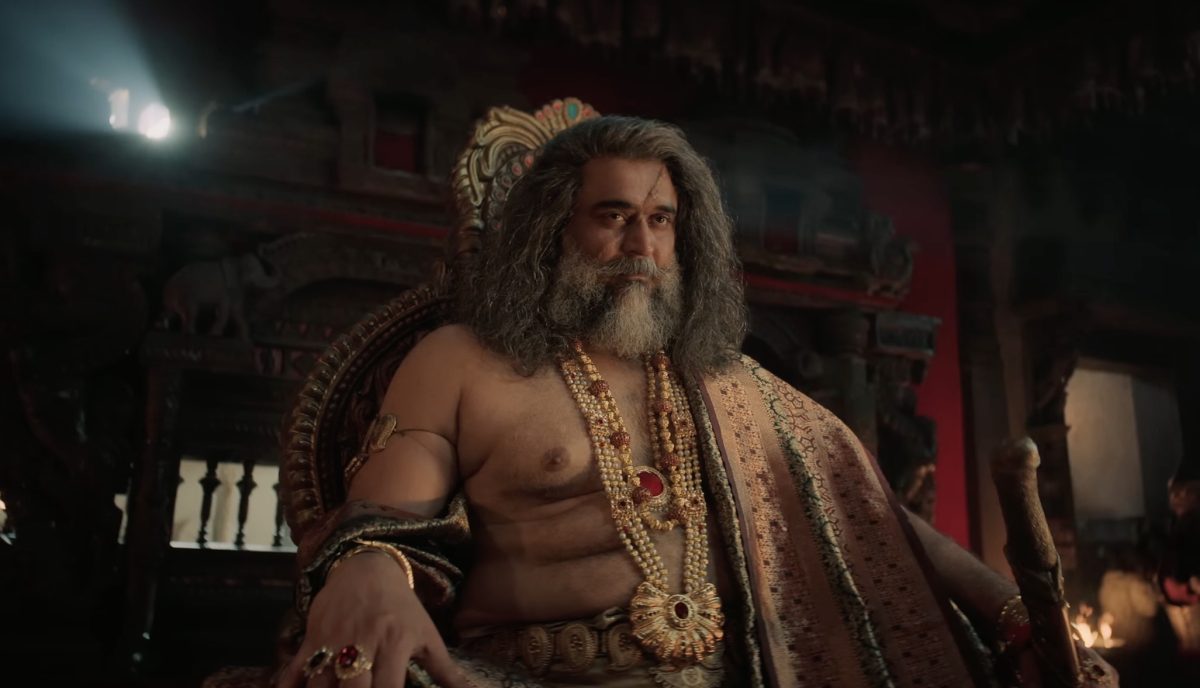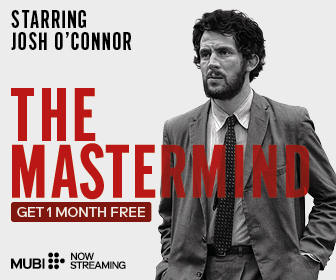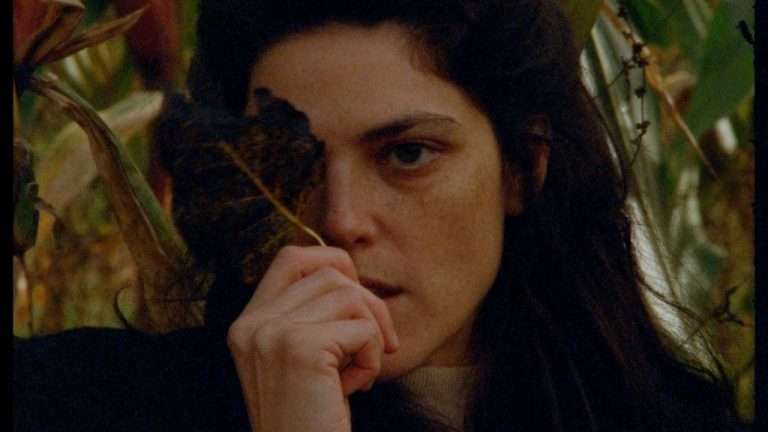When “Kantara” was released in 2022, it took India by storm. Everyone around me seemed hypnotised by its mix of folklore, mysticism, and masculine energy. I remember leaving the theatre half-conflicted: the film was too loud for my liking, the humour — especially the crude sexual jokes — often felt cringe-inducing, and the screenplay followed a familiar redemption template. It was the classic tale of a trouble-maker who finds his higher calling through pain and penance. Yet, I couldn’t look away.
There was something otherworldly in the final thirty minutes — when Rishab Shetty surrendered himself to the Daiva — that left me stunned. Watching him transform, possessed and primal, was unlike anything I had ever seen on the Indian big screen. So when Kantara: Chapter 1 (2025) was announced, promising to trace the origins of that legend, my curiosity outweighed my scepticism. I expected grandeur, yes, but I hoped for emotional transcendence too. What arrived, however, is a film that expands the canvas spectacularly but loses the heartbeat that made its predecessor so haunting.
A Visual and Technical Triumph
Let’s begin with what “Kantara: Chapter 1” does astonishingly well. This is a film of uncompromising visual ambition. The scale dwarfs that of the first movie; the forests, temples, and battlefields feel larger, deeper, and almost mythic. Shetty, working once again as director-writer-actor, stages his frames with painterly precision. Each shot brims with motion — fire, mist, bodies, drums — creating an operatic rhythm that’s impossible to ignore.
The most impressive part is how tactile everything feels. In an era when even modestly budgeted films lean on green-screen spectacle, “Kantara: Chapter 1” insists on the physical. The set pieces are crafted using practical effects rather than digital gloss, and the result is tangible weight and texture. You feel the sweat on the warriors, the heat of the torches, the thud of hoofbeats echoing through the jungle.
The much-talked-about chariot sequence is the film’s show-stopper — a feral symphony of dust and velocity. The way the camera hurtles alongside the chariot gliding under wheels, brings to mind the relentless precision of George Miller’s “Mad Max: Fury Road” and the adventurous spirit of early Spielberg.
It’s an exhilarating stretch of pure cinema, a reminder that Shetty understands the physical language of action better than most Indian directors today. Ajaneesh Loknath’s score again pulses with earthy percussion and divine chants, and Arvind Kashyap’s cinematography finds poetry in chaos. The editing occasionally breathes too fast, but the sensory momentum rarely dips. On a purely technical level, “Kantara: Chapter 1” is an aesthetic powerhouse.
A Story That Struggles to Keep Up

Yet, when the drums quieten, what remains is a narrative that strains under its own weight. The first forty minutes try to juggle multiple subplots — court intrigue, divine prophecy, royal politics, generational conflict — all crammed into an over-busy prologue. Instead of slowly immersing us in this mythic world, the film throws everything at once, diluting the impact of each thread.
The story lacks the emotional anchor that made “Kantara” resonate. Verme, the new protagonist (also played by Shetty), is a warrior torn between duty and divinity. But unlike Shiva’s journey of reluctant faith, Verme’s arc feels static — he is a character described by destiny rather than shaped by it. The screenplay seldom allows him moments of vulnerability or doubt. As a result, his eventual transformation feels inevitable rather than cathartic.
Also Read: Kantara (2022): Movie Review & Ending, Explained
Adding to the problem is the film’s tonal inconsistency. During intense confrontations or life-and-death duels, the script suddenly inserts awkward jokes — the kind of humour that worked in rustic banter but feels misplaced amid violence. These gags often undermine the seriousness of the scene, puncturing tension that Shetty has worked so hard to build.
Nowhere is this more evident than in Prakash Thuminad’s character — a comic sidekick modelled on the out-of-date Bollywood womaniser archetype from the 1990s. His exaggerated flirting and bawdy remarks feel like intrusions from another movie altogether. It’s surprising to see such dated writing in a film otherwise steeped in mythic solemnity.
A Weak Antagonist and Overreliance on the Divine
Gulshan Devaiah steps in as the antagonist, a morally corrupt nobleman who seeks to challenge divine order. The actor brings a quiet menace and an unmistakable aura of intelligence to the role, but the script leaves him stranded. His motivations are sketchy, his menace undercut by thin writing. What could have been a battle of ideologies becomes little more than a ritualistic clash between good and evil.
The film also leans excessively on divine intervention as its narrative engine. Every time the human drama begins to falter, the screenplay resorts to celestial rescue. The appearance of Guliga and other daivas — while visually hypnotic — starts to feel like a plot device rather than a spiritual culmination. The repetition drains the novelty that made the first film’s final act so transcendent. There’s an almost mechanical quality to the miracles here. They arrive on cue, not through emotion but obligation.
The Surprise Strength: Rukmini Vasanth
Amid all the noise, one performance quietly commands attention — Rukmini Vasanth, who emerges as the film’s true surprise package. Far from being ornamental, her character is written with depth and dignity. She isn’t an accessory to Verme’s destiny but a force within it — a woman of faith, intellect, and courage. Her performance is beautifully restrained. She speaks less, feels more, and often communicates through silence. There’s empathy in her gaze, conviction in her voice, and a grounded warmth that cuts through the film’s mythic bombast. She becomes the audience’s anchor — the one reminder that faith can coexist with reason.
Then arrives the twist surrounding her character—one that redefines much of what has unfolded so far. Without delving into spoilers, it’s a revelation that feels both tonally unexpected and emotionally invigorating, lending the climax a deeper, more affecting resonance. For once, the divine isn’t something distant or ornamental; it’s intimate, embodied, and profoundly human.
Shetty’s direction amplifies this by treating her character with genuine respect. She isn’t reduced to a symbol of glamour or pathos—she carries purpose, agency, and evolution. In a world steeped in hyper-masculine energy, her presence becomes a counterbalance, a reminder that femininity here isn’t fragility—it’s equilibrium, poise, and quiet strength.
When Divinity Repeats Itself
Of course, no “Kantara” film is complete without the trance of possession. Once again, when Rishab Shetty channels the Daiva, the screen ignites. His performance in these moments is feral, physical, and almost frightening. You can sense his total surrender to the mythic energy — a mix of performance art and spiritual invocation.
These sequences remind you of why Shetty is such a singular performer. His body language, his guttural voice, the way his eyes glaze over with divine intensity — it’s magnetic. But the difference this time is that we’ve seen it before. The novelty is missing. What once sent shivers now inspires admiration, not awe. The film revisits familiar beats without finding fresh emotional resonance.
The Climax and Its Abrupt End
The grand climax — the battle between Kal Bhairava and Devi Chamundi versus Kanakavathi and King Rajashekhara — is mounted with undeniable spectacle. The scale rivals anything seen in contemporary Indian cinema: fire raining from the skies, drums echoing like thunder, warriors clashing beneath divine light.
For a brief spell, “Kantara: Chapter 1” achieves mythic grandeur. But then, just as the battle begins to reach fever pitch, it’s over. The sequence feels curtailed, almost as if edited down to meet a runtime constraint. The resolution comes too easily, too neatly, leaving an odd sense of incompletion. You wait for another surge of transcendence — the spiritual high that the first film’s finale delivered — but it never arrives. The ending is abrupt, not ambiguous; it leaves you wanting, but not in a good way.
The Bigger Picture
What “Kantara: Chapter 1” ultimately reveals is the challenge of outdoing one’s own legend. The first film was lightning in a bottle — a raw, unexpected convergence of folklore, faith, and filmmaking craft. This prequel tries to recreate that phenomenon through scale and intensity, but the soul is missing.
Shetty, the director, remains visionary — few Indian filmmakers today would dare to make a mythological action epic without relying much on heavy VFX. Yet Shetty the writer seems trapped by the burden of expectation. In seeking to explain the origin of mystery, he inadvertently diminishes it. The result is a film that commands awe but not emotion. Between spectacle and silence, the story gasps for air.
Final Verdict
“Kantara: Chapter 1” is both majestic and meandering. It dazzles the senses even as it leaves the heart untouched. Rishab Shetty delivers another powerhouse performance, and his craft behind the camera remains top-tier. Yet the film’s overreliance on divine imagery, uneven pacing, and tonal missteps keep it from achieving the spiritual high it seeks. It’s a cinematic sermon whose faith lies more in fire and fury than in feeling. You come away admiring the craftsmanship but missing the quiet revelation that once made this saga so special.





![Winter Boy [2022] ‘TIFF’ Review: An Affecting And Personal Meditation On Loss & Grief](https://79468c92.delivery.rocketcdn.me/wp-content/uploads/2022/09/Winter-boy-2022-review-768x384.jpg)
![Jesus [2019]: ‘Japan Cuts’ Review – The dilemma of belief through the prism of innocence.](https://79468c92.delivery.rocketcdn.me/wp-content/uploads/2019/09/Jesus-Japan-Cuts.jpg)


